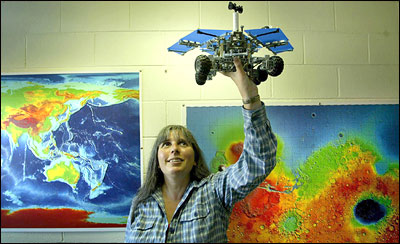Where to land Mars Curiosity for the best science? Interview with Marion Anderson, who helped choose the landing site.


You’ve sunk more than $2 billion into a car-sized rover and you’re ready to send it to explore Mars. But where exactly on Mars do you send it?
Of course you want it and its controllers back here to be able to do the best possible science. So apparently that is exactly what NASA did – consulted the geology scientists of the world.
One of those scientists was Marion Anderson of Melbourne’s Monash University.
In this interview recorded on 2 August 2012, Marion explains to me what went into the selection of Gale Crater as the landing site for the Mars Curiosity rover, what to expect from the rover as it begins to explore the crater after its landing there on Monday 6 August, and why Curiosity is NOT looking for life, despite what many media people are saying (running time 20 mins).
Marion also talks about her role in selecting the landing sites for those other Mars rovers Spirit and Opportunity, and where next after Mars?
If you are interested in learning more about the geology of Mars, I highly recommend the one-hour lecture by Richard Pogge titled The Deserts of Mars from an entire – free – university course in Astrobiology from Ohio State University (also available on iTunes).
In the interview you’ll hear Marion talk about how Mount Sharp in the centre of Gale Crater is actually higher than the surrounding crater walls – some five kilometres high. In this lecture, listen for an explanation why Olympus Mons is the highest volcanic cone in our Solar System, and probably explaining the height of Mount Sharp too.
 Follow
Follow
2 thoughts on “Where to land Mars Curiosity for the best science? Interview with Marion Anderson, who helped choose the landing site.”
Comments are closed.